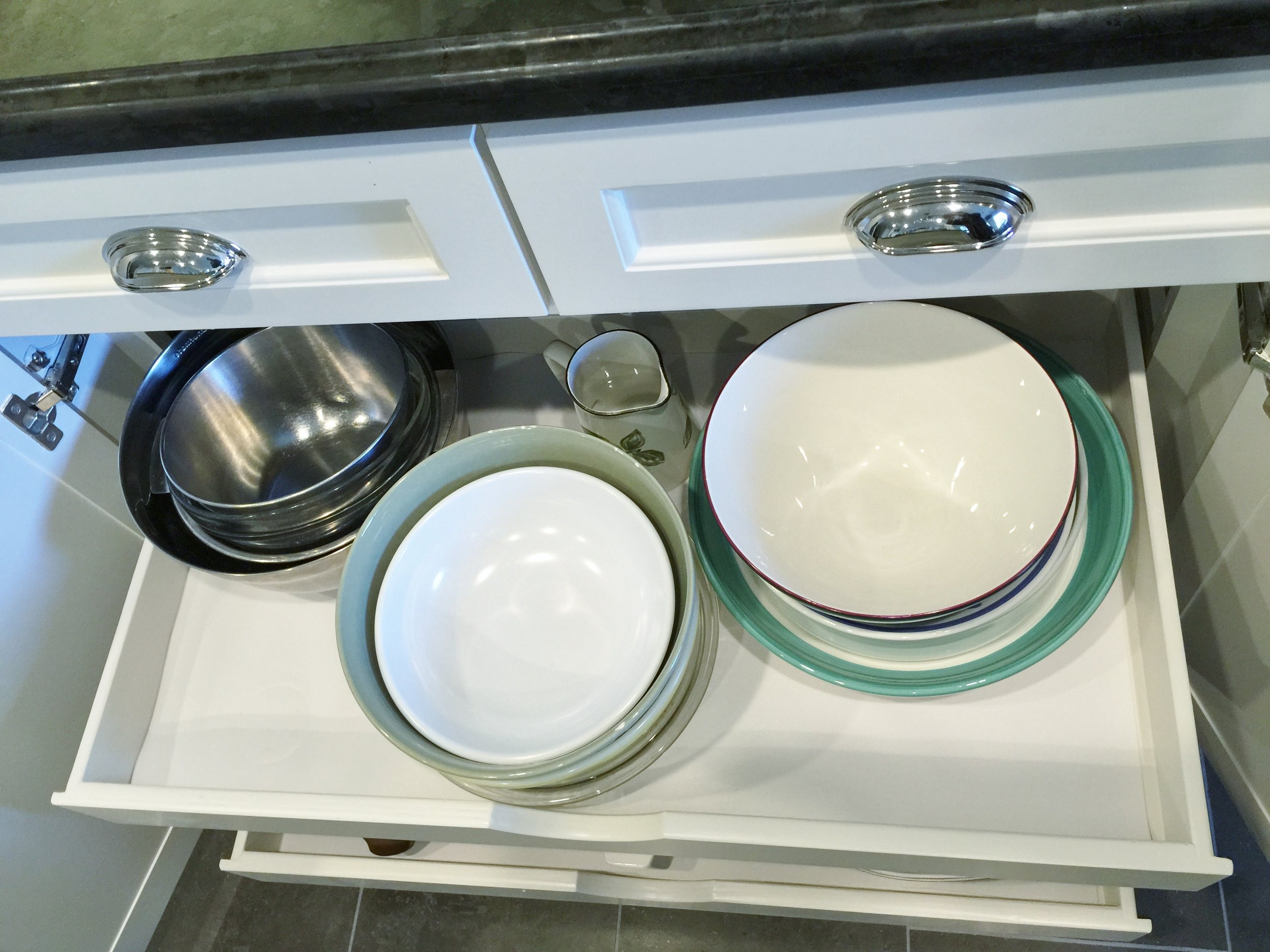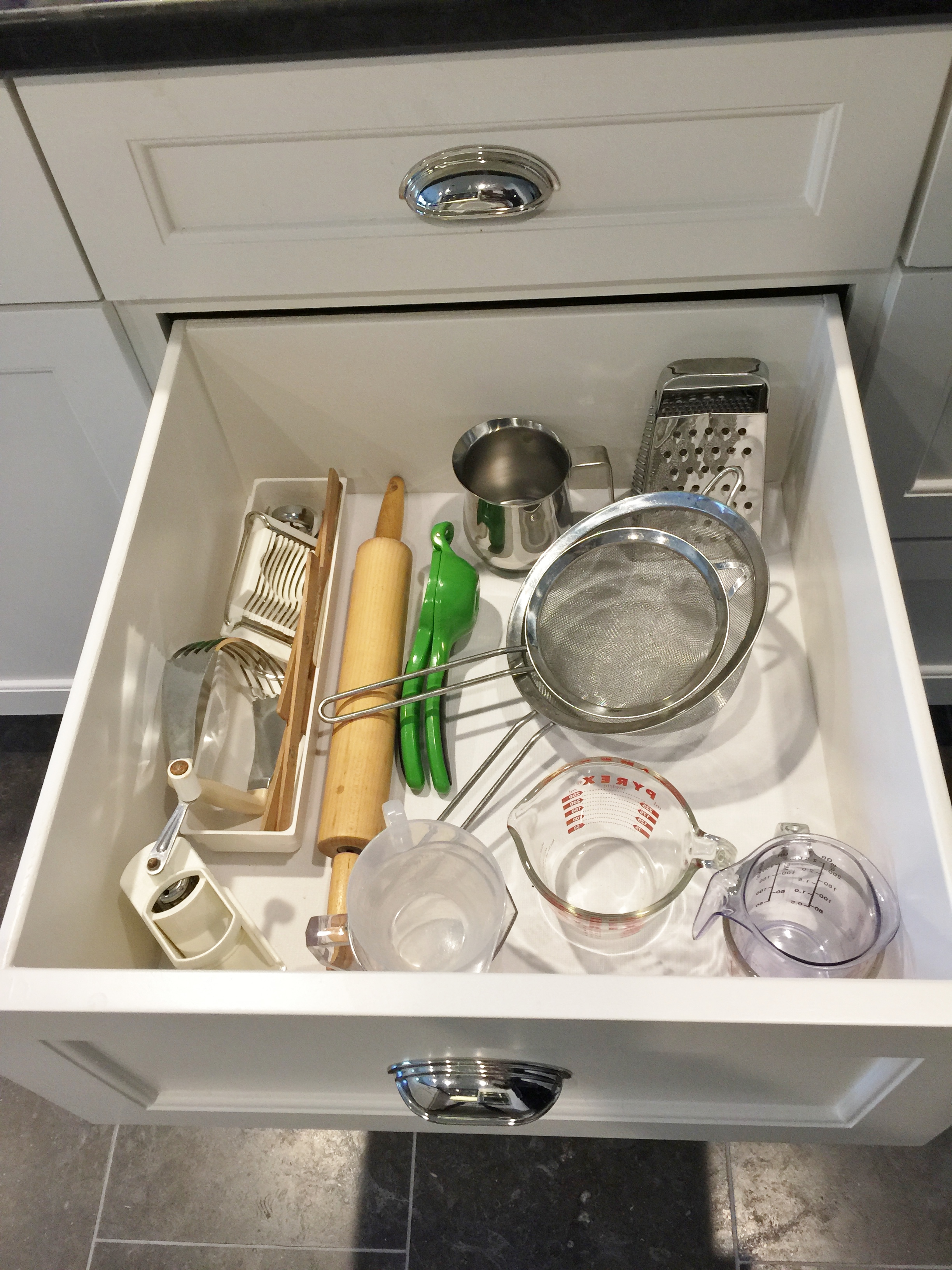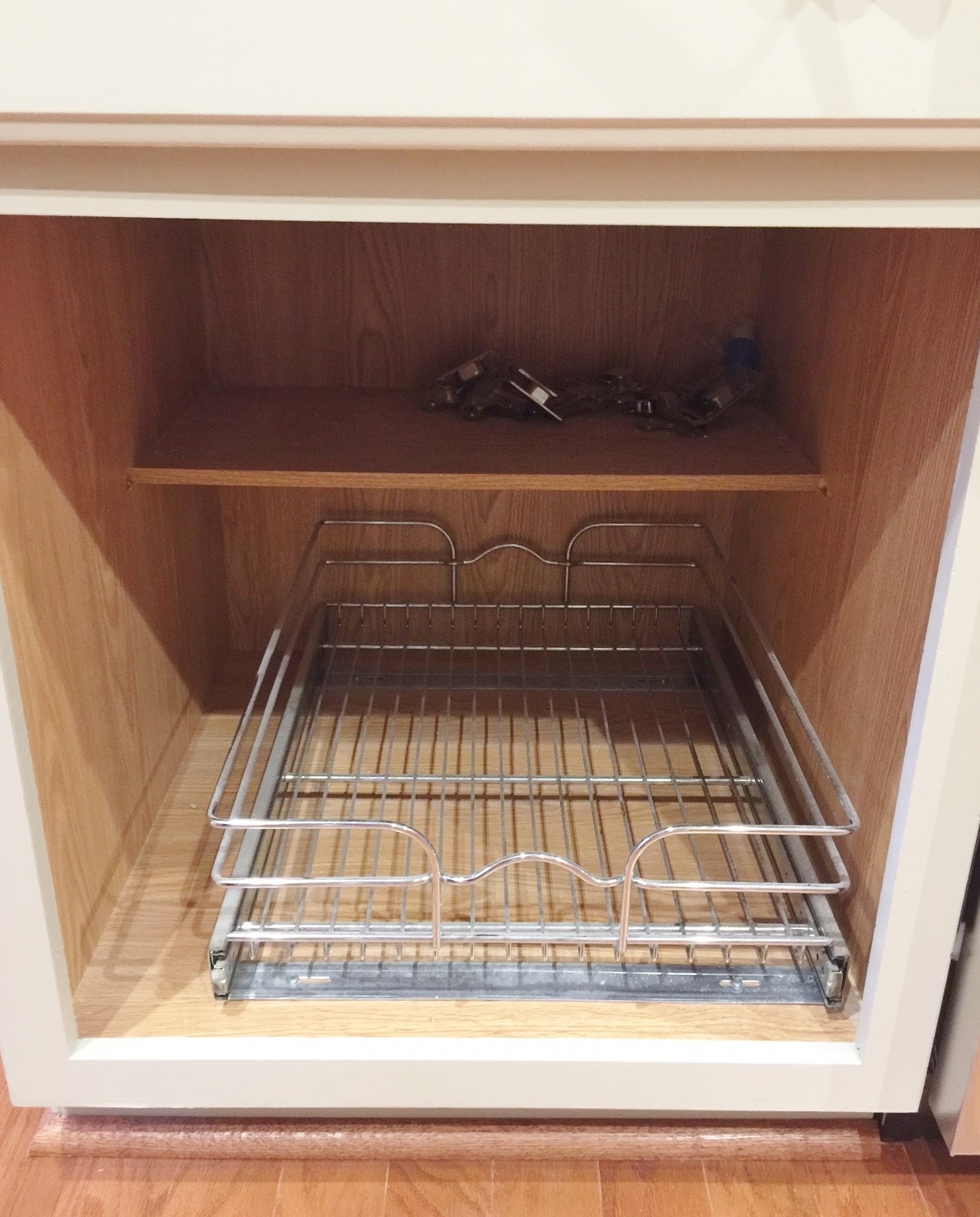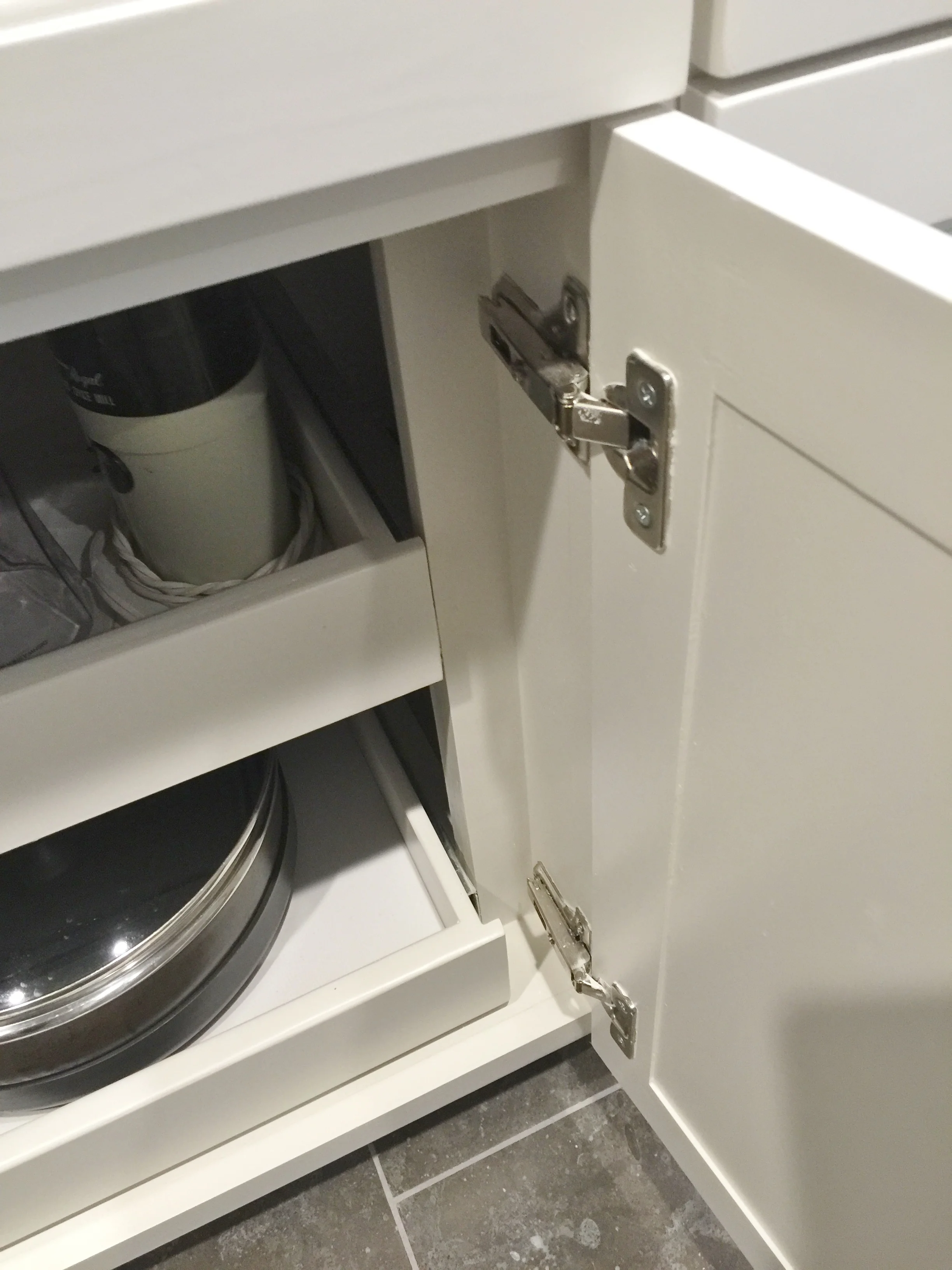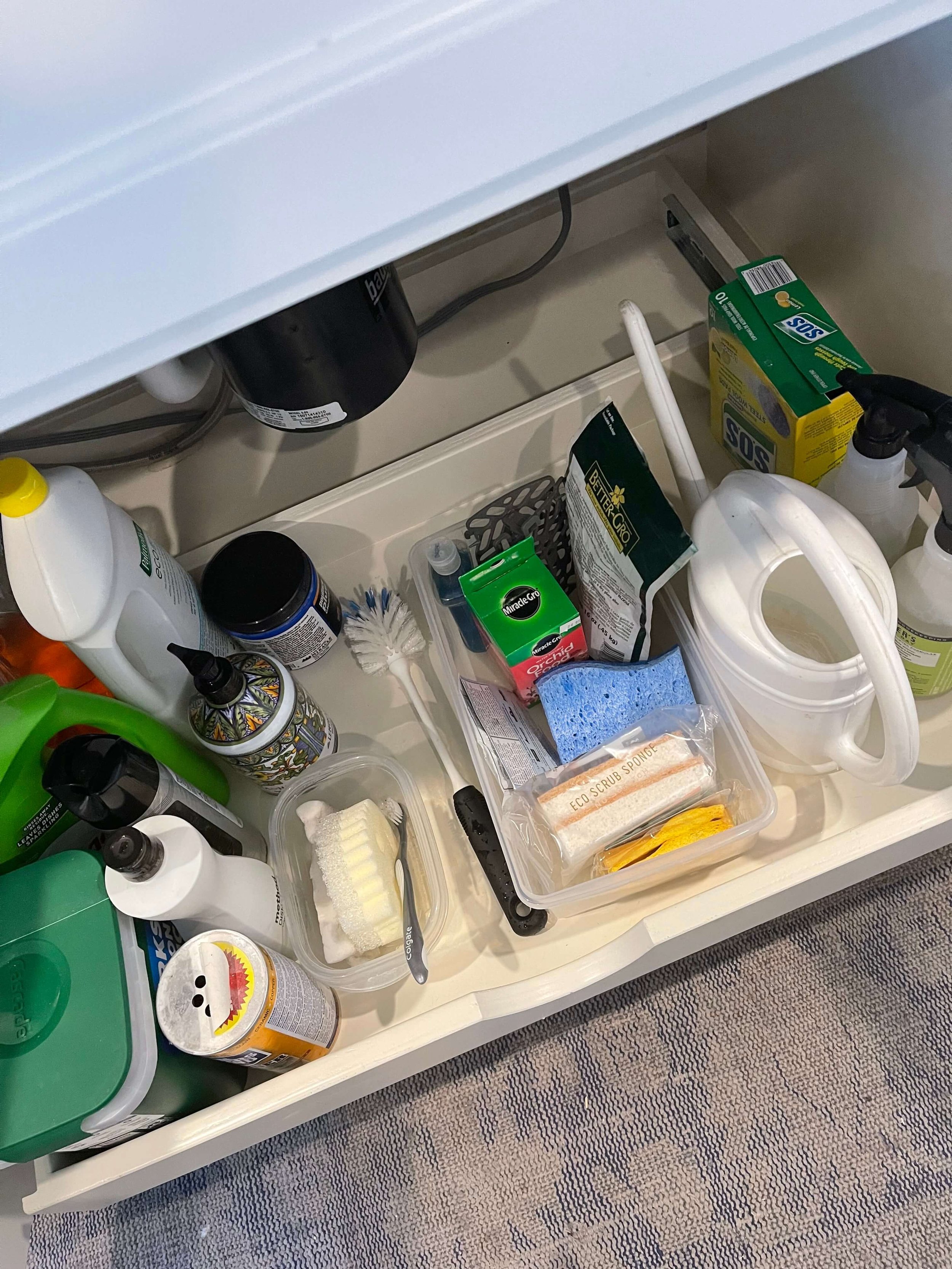When we are laying out a kitchen elevation and clients are thinking about their storage needs, they always kind of go back and forth over drawers vs. pull-outs behind doors.
Most people request pull-outs, just because typically they don’t have pull-outs in their existing cabinetry and it annoys them that most of the stuff in those cabinets is pretty hard to get to. Things get lost in the back and once items are stashed back there, they are often forgotten and not used.
Deep, wide drawers are very handy too, however. You don’t have to open the doors first, making sure the doors are open wide enough for the pull out to come all the way out, and then pull out the shelf. I love the ones I have in my kitchen now.
Deep, wide drawers are handy in kitchen cabinetry
There are several considerations to keep in mind when deciding on drawers vs. doors in kitchen cabinetry.
A deep, wide drawer does have a limit in size. You just can’t do a wide drawer at 36” wide or more, because it will sag over time, even with heavy duty glides. Homeowners might tend to weigh down that drawer with big, heavy items and you have to account for that happening somewhat.
Pullouts that are manufactured, like these by Rev-A-Shelf, are handy and well made, but come in a standard width or size, so if your cabinet size doesn’t match up exactly, then you might have some space that is not being fully utilized or wasted.
The pull-outs in my kitchen were made by the carpenter. They fit in perfectly with the width of the cabinet, as I had some odd sized cabinets.
Pullouts do take out more usable width in the cabinet in general, because of the glide, the plywood edge of the drawer, and the build-out it takes to clear the hinge and cabinet door for it to slide out easily. That measures around 2 ½” on each side, or basically 5” overall, that is deducted from the actual usable width of the cabinet.
As a result, the best place to use a pull-out, is typically in a wide door opening if possible. They are extremely useful then, as you can see with mine. They work well for storing small appliances, oddly shaped items, big bowls and cookware.
One of the best places to use a pullout in my opinion, is under the kitchen sink.
The kitchen sink area has that width you need for best use of a pullout and you have to clear the plumbing, so it gives you access to some of the deeper, lower areas of that cabinet.
A pull out drawer in cabinet under kitchen sink is very handy and gives a lot of access to that space for storage. carlaaston.com
I do have one place in my island where I used a narrow pull-out because the space was limited, but it’s so narrow it’s not very useful. It is better storage than what I had here previously and I didn’t want a bank of drawers there because of the appearance of face of the island, but it is not the most ideal situation for getting best use out of that space.
Kitchen island with consistent cabinet door look
Deep drawers are a great option, but again, you can’t go too wide. Here is how we typically divide up a bank of drawers these days, for best use.
We divide up the elevation vertically, below the 36” high countertop with its 1 ½” edge, with a 6” high top drawer panel, the base at 4” high, then the lower two drawers are marked as “Equal”.
By labeling it “Equal”, we are giving the carpenter some fudge factor there and not demanding a certain dimension. I’d rather him hold true to a small reveal between each drawer and the other givens dimensionally, than give me an exact cabinet drawer panel height.
The lower and middle drawer panel ends up being roughly 11" high. The inside heights on the drawers are not the same depth as the panel height though. We have to allow for the depth of the box’s base plywood panel, the clearance, etc. These drawers are 8" high inside with some clearance above.
Mid and lower drawer panel height approximate
Inside mid and lower drawer depth plus an inch or so to clear the face frame
The top drawer that measures 6” high on the outside, could measure 3” deep with a 1” clearance above, under the face frame on the interior. Typically then, it’s around 4” high of usable space inside the drawer.
Top drawer depth plus an inch or so clearance above
Deep drawers are great for bulky kitchen items
Items like measuring cups, stacked bowls, plastic food storage containers, dishtowels, bulky serving spoons or kitchen tools work great in deep drawers.
Drawers can be a little limiting with lifting bulky items in and out of the drawer. If items will be stacked on top of one another at all in a drawer, then a pullout might be a better solution. You don’t have the side panels of the drawer to deal with, and it’s just more open.
Drawers vs. doors in kitchen cabinetry may come down to the visual appearance of the elevation.
While getting access to every inch of storage might be critical for a client, we also have to think of the visual aspect of the elevation. You don’t want the cabinetry to be divided up randomly according to storage needs only. It would appear chaotic and unplanned. You need to be conscious of the lines created, the placement of appliances, etc. There are often cases where the visual might override the practical.
Kitchen cabinetry with deep drawers
Need more info on kitchen cabinetry? You might want to check out this post.
My blog may contain affiliate links. Any purchases, at no additional charge to you, are most appreciated and make this blog possible. :-)
